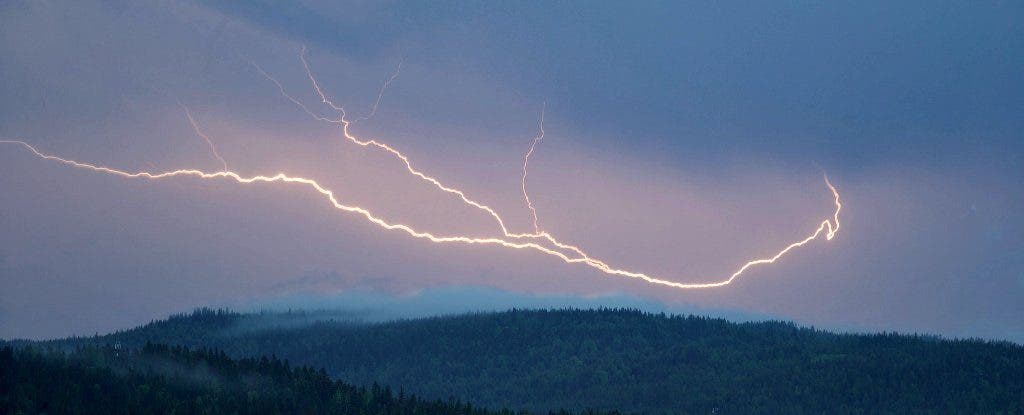Scientists have just observed the longest lightning bolt on record by a long shot. The lightning was spotted in Oklahoma, stretching almost from one edge to the other of the state.

The United Nation’s World Meteorological Organisation (WMO) officially made the announcement, stating that it easily beats the previous US record at 321 km (200 miles). In fact, it’s so long and it lasted for so long that it might force us rethink our understanding of lightning. Meteorologists believed lightning peaked up after 1 second, but this one lasted several seconds.
“The committee has unanimously recommended amendment of the AMS Glossary of Meteorology definition of lightning discharge as a ‘series of electrical processes taking place within 1 second’,” the team writes, “by removing the phrase ‘within 1second’ and replacing with ‘continuously’.”
It’s not the first time such a lightning has been spotted. According to the WMO, France holds the record for the longest-lasting lightning strike, with a flash in 2012 lighting up the sky for a whopping 7.74 seconds.
But as impressive as this really is, scientists believe that even more extreme events are happening in nature – we just haven’t monitored them yet. Every system used for detecting lightning has limitations. Most notably, ground-based lightning networks must be able to detect a flash with at least three antennas to locate it with an acceptable margin of error. This often leads to the rejection of cloud-to-cloud lightning, as one antenna might detect the position of the flash on the starting cloud and the other antenna the receiving one. Still, space-based systems to do exist and they are free from this limitation, but it can be quite resource-intensive to monitor lightning from space.
This also shows that the ‘danger zone’ around a thunderstorm could be much larger than we previously thought. John Jensenius from the National Weather Service told Angela Fritz from The Washington Post that the new record “demonstrates the far-reaching effects of lightning, and just how far around a thunderstorm the atmosphere can be electrified”. He urges people to be conscious of this.
“People need to be aware that any time a thunderstorm is in the area, there is a threat of a potentially deadly lightning strike,” he added.


